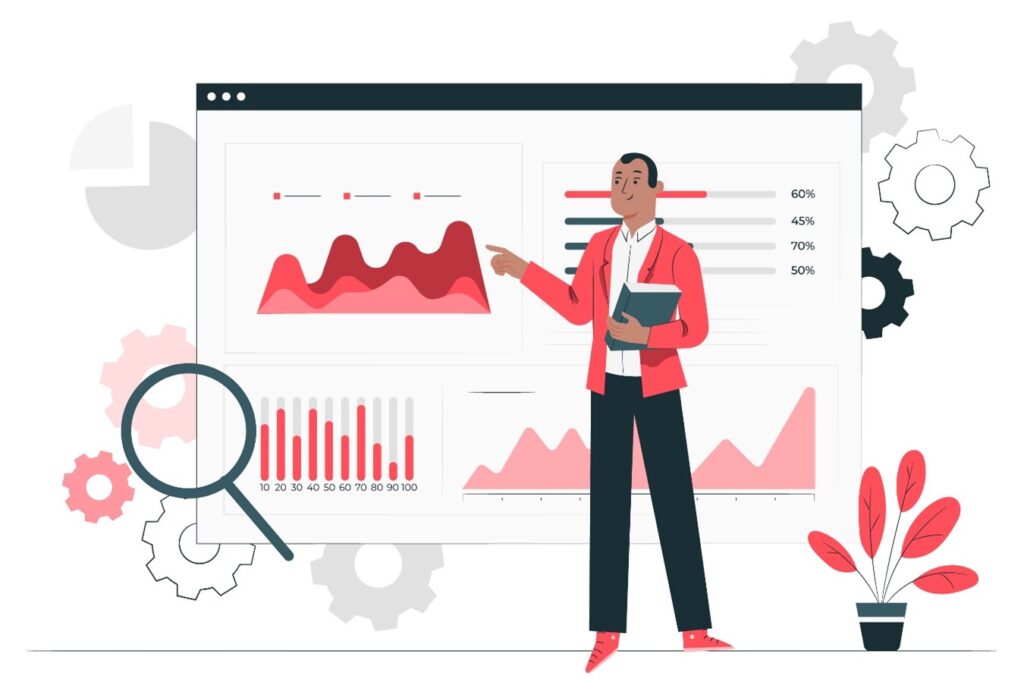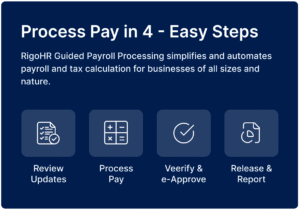
Large corporations have used integrated suites of finance, operations, production, vendor, and customer management application packages in various formats, such as ERP or MIS. Though designing, developing, and implementing such systems is expensive, the benefits in terms of process efficiency, operational excellence, and informed decision-making are numerous. The cost and initial effort pays back within a few years or even months.
But, SMEs, and even large enterprises in Nepal, have not yet invested in such systems. There are many reasons why the momentum toward integrated business management systems has not started in Nepal, including:
- Misconception – that ERPs are very special applications and are built only for large enterprises.
- Value for Investment – that the cost of such systems is too high to justify investment and resulting benefit.
- Unavailability of Reliable System – there are no readily available ERP systems in Nepal and there is lack of professional and knowledgeable team for ERP implementation.
- Compatibility – Systems developed in international context and environment do not fit Nepalese environment.
Redefining ERPs into IBMS for SMEs
Most of the people still think ERP as a single huge application that were built till a decade back. Many things have changed; and now ERP system is not necessarily a large block of system with everything built inside it. ERP has been evolving as Integrated Business Management Systems (IBMS) in the form of one or a combination of more than one system that can communicate with each other seamlessly (whether they are from the same vendor or from different vendors) to cover financial, operational, employee, vendor, customer functions (and there may be more). The definition of ERP may change from industry to industry and nature of the business because it is a system not a particular software. The primary factor of what constitutes an ERP is the one that fulfills business needs – not what is available from a traditional vendor.
For SMEs, we now see ERP in the form of IBMS which comprises of applications or solutions that can be integrated together and can communicate with each other as connected systems facilitating, standardizing, and streamlining business functions and informed decision making. With cloud infrastructure and SaaS (Software as a Service) offerings, almost all good applications have the capability to interchange data with another system through API or similar means and one or more vendor’s applications can connect and complement each other seamlessly to provide ERP functionality.
In IBMS:
- There may be one or a combination of more than one interconnected and integrated applications or systems
- The core of the system is most likely financial management
- Peripheral systems can be from the same vendors or from different vendors
- The system as a whole can support business in financial, supplier, customer, and employee management via real time and actional information at a minimum.
Why should SMEs invest in IBMS
The COVID pandemic has taught us a lot about going digital. Businesses and consumers have taken a leap forward in technology usage and have clearly understood the benefits of information technology. From one-on-one meetings – we moved to online meetings; from paper foreign money – we moved to virtual wallets and on-line bills; from physical papers – we moved to virtual workflow. And where digital systems and virtual options are not available – we have started to feel uncomfortable.
To summarize the following are some of the compelling reasons whey SMEs should consider Integrated Business Management System in their organizations:
- Now it is time for teamwork and collaboration more than ever.
- We are being forced to compete with neighboring countries and other foreign counterparts where cost is low due to huge market reach or cheap labor.
- Margins are getting lower and there is a need for cost control without compromising quality or reducing margin.
- Everything is getting connected – bank, government institutions (IRD, CRO, Customs…), food, grocery service and many more and there is no escaping anymore.
- Customers and employee expectation have increased, and they are looking for connected, integrated, seamless and mobile experience anytime and everywhere.
To lead the pack or at least move with the trend and expectations, SMEs should invest in and implement well designed IMBS to transform business process and gain valuable information to support business decisions.
Fundamental Needs of SMEs
SMEs are facing numerous issues on technology adoption. But, at the same time, they do not know what they are missing and what is possible. The major hurdle is lack of awareness and willingness to transform. Finance Professionals have an important role to play as business process consultants and provide additional value to their clients. Clients will pay and thank their consultants for this insight and advisory.
Transforming business process is not a quick and easy task. It takes time, dedication, and process re-engineering in many areas. Businesses can start from Finance and slowly move to other areas based on their size and nature of business.
Major problems faced by small and medium enterprises are:
Primary problem: Talent Management
Many organizations in Nepal are running their business in family or friend culture. But now competition is increasing more than ever in one hand and there is wider opportunity (including business reach) on the other hand. We are in a position to do business without geographic boundaries (nationally and even globally). But the major problem all businesses are facing is – people issues; ranging from how to attract talent, how to compensate, motivate, get what is expected of them and retain them. Even management does not know what they expect from their people. After Finance and Business idea, the most important part of the business is People. People management should be the primary concern of any business to succeed. To put it in another words – everybody in the organization should be in the same direction to succeed. People are the most wasted resources despite having a great potential.
Secondary problem: Stale Records and no Business Insight
Almost all the businesses do have an accounting system. But in most of the cases the system is so traditional that it is just vouchers, ledgers and trial balance without any business insight for the owner or management.
The traditional system does not provide business insight like:
- What is profitable, what is not?
- Where there is resource waste?
- Where there is possibility of cost control?
- What is the current resource position?
- What needs management attention?
Further, traditional systems do not provide the following assurance:
- Is there control mechanism to prevent unauthorized activities?
- Are we complying with the law?
- Is there audit trial if something wrong happens?
- Is the data safe?
It is just a judgement or blind game – keep walking until you are tired and cannot keep up – and stop after burning lots of time and resources.
In general, this can be avoided through a well-planned IBMS that can standardize, streamline, and help you manage your business and resources in the following key areas:

Cost and Affordability
Many people think IBMS are costly, and SMEs cannot afford them. It was true to some extent in the past when only some large international companies were providing ERP systems to large enterprises. There was lack of capable manpower to modify and implement the system in Nepal. As a result, international system and international manpower cost a lot.
But now there are diverse options to choose from Nepalese and international vendors. We have a pool or resources who can consult, modify, and deploy systems at an affordable fee. Even better, SMEs can opt to go for standardized systems built for the industry to reduce cost and time to implement. It also reduces risk of project failure.
With the cloud technology many systems are available as Software as a Service (SaaS) offering. SaaS solutions are online systems without the hassle of inhouse IT manpower and infrastructure. The solution is offered as a periodic subscription fee (usually monthly). There is no need for huge upfront investment. It can be more secure and reliable than unmanaged inhouse system.
The small monthly cost of the SaaS IBMS solution is very insignificant when compared to the benefits organizations can achieve in the long run. Good IBMS in Nepal are available from some vendors at a very low cost starting from NRs. 10,000 to 20,000 a month based on the size of the business.
Availability
As mentioned above, many national and international systems are available in Nepal. For large enterprises who have budgets in crores can go for international systems, customize them to fit local law and environment and deploy.
But majority of SMEs may not have a budget in crores for business management system. And even if they have the budget, the value of investment may not justify the benefits received. International systems are good in many respects as long as they are from reliable and reputed vendors. But there is a major downside in addition to high cost – compatibility to local laws (e.g., VAT billing), requirements (e.g., NFRS), environment and working culture.
The solution to cost and compatibility problem is to go for home grown systems in Nepal. There are a few good Nepalese systems already available in the market that cover majority of the functions and features discussed above. Many finance professionals and software companies have also entered this sector to provide reliable solutions owing to increasing customer awareness and demand after the pandemic.
IBMS or ERPs are very complex systems and cannot be built in a short period of time. It takes a combination of financial and technological expertise, right technology and deep understanding of business process and the relevant laws of the country. Therefore, businesses should be very careful in choosing the right vendor and solution.
Finally, when choosing a vendor or solution – choose the one that is compatible with local context and requirement, that is easy and intuitive to use, the company demonstrates a clear vision for the future development and has good reputation. And, if you are building your own custom system, think carefully – is the vendor capable to provide a complex solution in terms of financial, business and technological expertise?
Conclusion
Integrated Business Management Systems (IBMS) also referred to as ERPs are not only for large enterprises. SMEs can use and hugely benefit from these types of systems in standardizing and streamlining financial, operational, people, reporting and compliance functions as well as suppliers and vendor management. The pandemic has increased awareness and demand for digital solution. The whole ecosystem from government to customer is leaning toward digital technology and we cannot be left behind. Good systems are available for SMEs nationally and internationally at a very low cost compared to potential benefits owing to greater demand and SaaS offering. It is now time to choose robust and reliable solution to manage your business and gain real-time insight of your business on demand for operational excellence and informed decision making.
Originally Published in “The Chartered Accountant”, Dec 2021, Vol. 21 No.2



